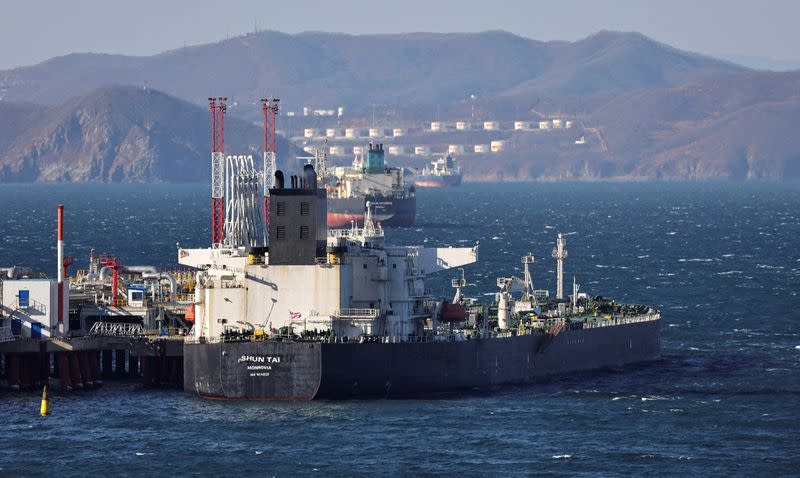Factbox-The Danish straits: gateway for a third of Russia's sea-borne crude exports

MOSCOW (Reuters) - Denmark could potentially block Russian oil tankers sailing through its waters under new European Union plans, the Financial Times reported on Wednesday, as the West explores more ways of enforcing a price cap on Moscow's exported crude.
Following are details about the route:
* The Danish straits between Jutland (mainland Denmark) and the Scandinavian Peninsula (Norway, Sweden and Finland) allow vessels to exit the Baltic Sea and include two fairways for commercial shipping.
* Russia's main Baltic Sea ports are Primorsk, Ust-Luga, St. Petersburg, Vyborg, Vysotsk and Kaliningrad. Russia exports its flagship Urals oil grade via the ports, while Kazakhstan uses them to export its Kazakhstan Export Blend Crude Oil (KEBCO).
* The ports of Primorsk and Ust-Luga are set to export more than 1.5 million barrels per day (bpd) of crude oil in November, which is around 1.5% of global oil supply, or more than a third of Russia's total seaborne oil exports.
* Cargo handling at Russia's Baltic Sea ports fell by almost 3% last year to 245.6 million metric tons while the volume of liquid cargoes rose by 11.8% to 148.6 million tons, according to data from the Russian Federal Agency for Sea and Inland Water Transport (Rosmorrechflot).
* Before the start of the conflict in Ukraine in February 2022, all Russian oil exports from the Baltic Sea were shipped to Europe. Since then, the bulk has gone to India, China, Egypt and Turkey.
(Reporting by Vladimir Soldatkin; editing by Guy Faulconbridge and Jason Neely)

 Yahoo News
Yahoo News 
